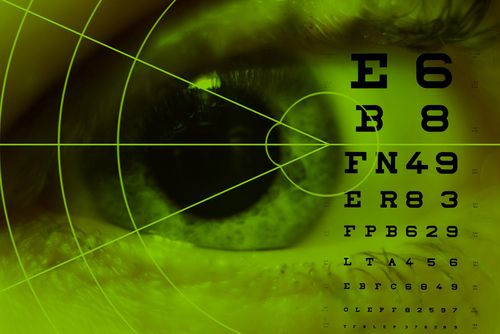Better Vision Without The Hassle: Corneal Inlays, An Implantable Eye Device, Improve Symptoms Of Presbyopia

Blurred vision of close objects, which is sometimes a result of aging, may soon be corrected with the help of a surgical ring called a corneal inlay. In a trial testing its effectiveness, 80 percent of patients reported satisfactory improvements in presbyopia, while seeing no difference in their vision of objects from afar. The results of the study were released on Saturday at AAO 2014, the 118th annual meeting of the American Academy of Ophthalmology.
Presbyopia, which means “aging eye,” is an age-related condition that makes it more difficult to see anything that's close. Our eyes' lenses are soft and flexible, changing shape to allow us to focus on near and far objects with ease. After age 40, however, the lenses become rigid and lose their flexibility. This makes it difficult to see at close range, and most commonly affects activities like reading. Close to one billion people are affected by presbyopia. Wearing glasses is the easiest way to remedy the condition, but it can be bothersome for someone who doesn't wear them, except for when reading.
Other methods for treating the condition include keratoplasty and Lasik laser eye surgery. However, while the former treatment is temporary and vision eventually diminishes, the latter is permanent, without the possibility of being reversed even if it causes inconvenience. Studies have shown advantages in using corneal inlays.
For the current study, an inlay called KAMRA, which is being reviewed by the Food and Drug Administration, was tested. The inlay is a thin, flexible, doughnut-shaped ring that measures 3.8 millimeters in diameter with a 1.6 millimeter hole in the middle. By creating a flap in the eye, also called a corneal pocket, doctors can insert it into the eye where it acts like a camera's aperture, adjusting depth of field to allow its wearer to focus near and far.
To test the inlay's performance, clinicians conducted a study on 507 patients aged 45 to 60 living in he U.S., Europe, and Asia. All patients had presbyopia but weren't nearsighted. After the surgery, the patients were tracked for three years. The researchers found that the implants gave 83 percent of the patients 20/40 vision, allowing them to see objects 20 feet further than those who have 20/20 vision. This kind of vision is also optimal for people who want to read newspapers or drive vehicles.
Earlier inlay treatments have associated with problems like haziness, but improvements in technology have fixed them. But perhaps one of the best things about these inlays is that they can be taken out at anytime. "This is a solution that truly delivers near vision that transitions smoothly to far distance vision," senior author John Vukich said in a statement. "Corneal inlays represent a great opportunity to improve vision with a safety net of removability."
Source: Vukich J. Treating Emmetropic Presbyopes with a Small Aperture Inlay: Three Year Results. At AAO 2014. 2014.



























